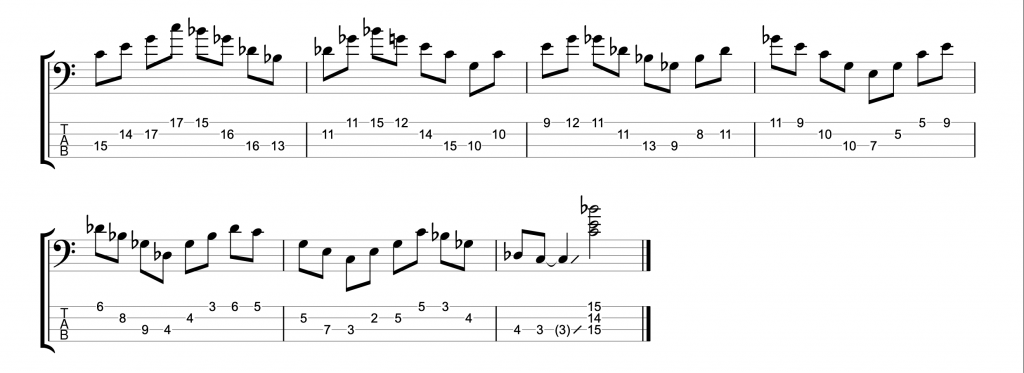Triad Pairs – Part 2 – Major Triads and How to Improvise on Chord Changes – Bass Practice Diary – 28th January 2020
A few weeks ago I introduced the idea of using Triad Pairs to make bass lines. This week I’m going to take that idea a step further by showing you how you can use pairs of major triads to improvise on chord changes. The idea with triad pairs, is to find two triads that have no notes in common, so you have six different notes. You can then use those notes to create exercises, melodies, bass lines or hexatonic scales (six note scales).
I remember when I first heard about the idea of triad pairs, it seemed to me at the time like the idea would have limited use. But when I got into it, I realised that the potential and the scope of triad pairs for creating interesting lines and harmonies, is absolutely massive.
Major triad pairs
There’s only three different ways that you can arrange two major triads and get six different notes. You can take two triads that are a semi-tone apart, a tone apart or a tritone apart. That doesn’t seem like many different options, but in a way, that’s part of the brilliance of triad pairs. You only need to practice those three simple ideas, and you suddenly have access to a massive amount of potential harmonic and melodic ideas.
Here’s an exercise for playing major triad pairs a semi-tone apart.

This next one is a similar exercise for playing triad pairs a tone apart.

Here’s an exercise for playing triad pairs a tritone apart.

How to use major triad pairs for improvisation
Of the three exercises above, the least versatile is the triads separated by a semi-tone. That’s not to say that they don’t sound great. Two major triads separated by a semi-tone creates a phrygian dominant sound that instantly makes me think of Spanish music and Flamenco guitar. It’s a great sound, but it’s quite rare to find opportunities to use it in jazz.
One of the main reasons why I choose Chick Corea’s Spain as the template for these examples, is because the F#7 chord which immediately follows the opening G major chord, is a perfect example of how you can use the phrygian dominant sound to maximum effect.
Here’s a sample line using an F# and a G major triad.

By contrast, the most versatile, but arguably less interesting sounding, is to play two major triads a tone apart. The versatility rises from the fact that there are two major triads a tone apart in the major scale (chords IV and V) and in the melodic minor scale. So, you can conjure the sound of not only both of those scales but also all of their modes, including dorian, lydian, lydian dominant and altered scale, just by using two major triads a tone apart.
The example that I used in the video, was using Eb and F major triads on the chord V, A7 chord. Which is creating the sound of the altered scale.

Then on chord I, D major, I dropped both of those triads by a semi-tone (one fret down). And the D and E major triads created a lydian sound on the D major chord.

Altered dominant sounds
Two major triads separated by a tritone creates a kind of altered dominant sound. It’s not quite the same as using the altered scale, but what it gives you is two very different sounding triads. A and Eb major triads could be used to play on an A7 chord, as I demonstrated with the A7 in Spain. However, you could also use those same triads to play on an Eb7 chord.

What you get is one triad that is the root, 3rd and 5th of the chord. Those are the most obvious inside notes that you can play on any chord. While the other triad functions as 7th, b9th and #11th. Which is one chord tone and two altered extensions or outside notes. You can use this strange juxtaposition of inside and outside sounds to create some really interesting jazz lines on a dominant 7th chord.

